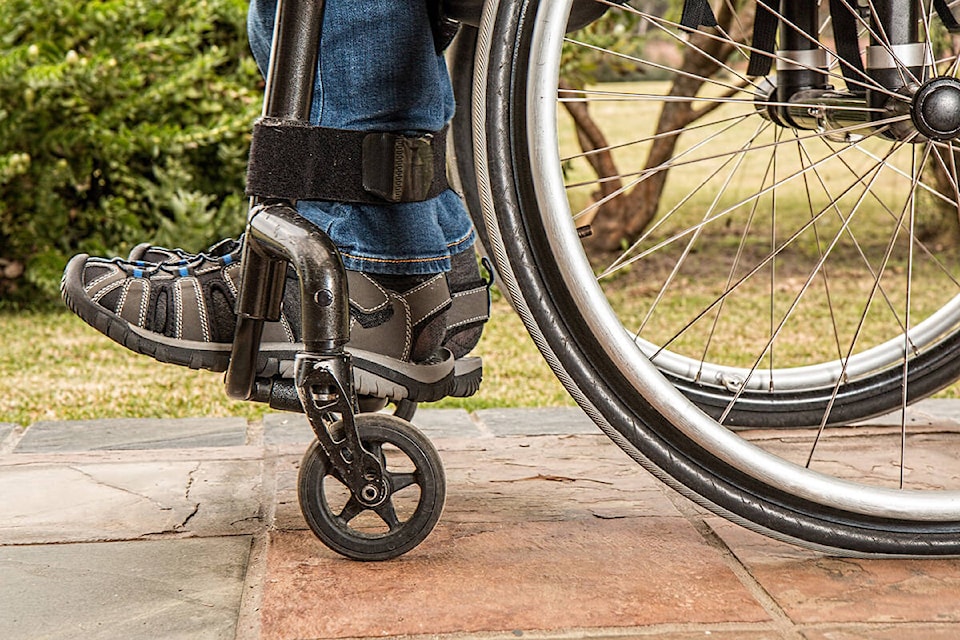In 2018, the GNWT released the NWT Disability Strategic Framework: 2017 to 2027. This was a collaborative effort between government departments, non-government organizations (NGO) and persons with disabilities.
Its four main goals were: person and family centred; inclusion and accessibility; awareness, education, and training; and coordination, evaluation, and reporting. Its objectives were categorized as: security and poverty education; awareness and training; transition planning and options; universal design; and living options caregivers supports. This framework was progressive and developed by those organizations, individuals, families, and caregivers directly impacted by disabilities. It was a collaboration.
However, when it came time to develop an action plan, the collaboration ceased and the GNWT worked solely on the NWT Disability Action Plan 2018-2022 with NT Health and Social Services taking the lead. Shortly after the 2022 end date, the NWT Disabilities Council began requesting an update on the progress of the activities outlined in the action plan. However, after many requests and delays, the GNWT released their final report to the legislative assembly in early October 2023.
In summary of the report the GNWT stated that “Of the 50 activities, 13 (26 per cent) were completed, 32 (64 per cent) were underway, 4 (8 per cent) were delayed, and 1 (2 per cent) was cancelled. While the Action Plan ended on March 31, 2022, an additional six activities were completed by departments during the 2022-2023 fiscal year, bringing the total completed Action Plan activities to 19.”
Even with these additional ‘completions’, it still is only 38 per cent. However, the statistics don’t tell the story and paint a much brighter picture than exists. Informed of outcomes through the final report and then completing a review of the ‘completed’ items, the NWT Disabilities Council discovered that these included multiple consultations and policy changes that led to no tangible change and made little to no impact on the lives of people with disabilities.
Others deemed ‘complete’ simply ended with open-ended vague further steps with no evaluation attached. The ‘In Progress’ actions were vaguely described and appeared to have multiple actions having a disconnect between the objectives, the activities outlined as in progress and the goals they were to achieve.
The ‘delayed’ and ‘not proceeding’ are in areas that are critical to people with disabilities, such as education and transition planning, and appear to have perimeters around replacement. However, when the GNWT can report on a tangible, measurable, completed action item, it is reported in a clear manner with quantitative data, i.e., NWT Housing Corp.
“The Canada NWT Housing Benefit program was introduced in April 2021 and continues to provide assistance to 150 active clients” in contrast to the Department of Education, Culture and Employment (ECE): “The work on a revised NT High School Pathways initiative has been discontinued … instead, ECE will be working over the next number of years on transitioning to the B.C. curriculum.”
Not necessarily objective
Herein lies the inherent problem: when governments report on their own performance, there are issues of risk which are documented in academic literature. These issues include government may be motivated to present a positive image and downplay or ignore negative aspects of their activities with a vested interest in how their reporting impacts their public image.
By being the primary sources of information on their own actions, it limits the ability for external sources to verify the accuracy and completeness of the information being reported reducing external oversight. There can be undisclosed conflicts of interest that compromise the integrity of self-reported data resulting in a lack of transparency and accountability.
Even when data is accurately reported by the organizations, or entities being contracted, government may interpret it in ways that align with their goals or agendas which lead to biased interpretations. This is why when independent scrutiny is performed, it often results in stark contrast to what the government has self-reported. This has been illustrated in past Auditor-General reports i.e. NWT Auditor-General Reports 2010 and 2020 on Early Education to Grade 12, NWT Auditor-General Report on Child and Family Services etc.
These vague and unimpactful action plans have become the GNWT’s approach to accessibility, which has only served to marginalized people with disabilities further. Exclusions, discrimination, limited opportunities in employment, education and social inclusion continue to increase. It is time to truly collaborate with disability organizations, people with disabilities, families, caregivers and supports to develop an action plan which truly meets the needs of people with disabilities and supports organizations that are delivering these services.
The framework has a life until 2027 and time is limited to develop actions that improve the lives of people with disabilities. The status quo must change, and it begins with independent, objective government oversight and reviews that present complete and unfiltered reports to the citizens of the NWT.
—Denise McKee is executive director of the NWT Disabilities Council.
